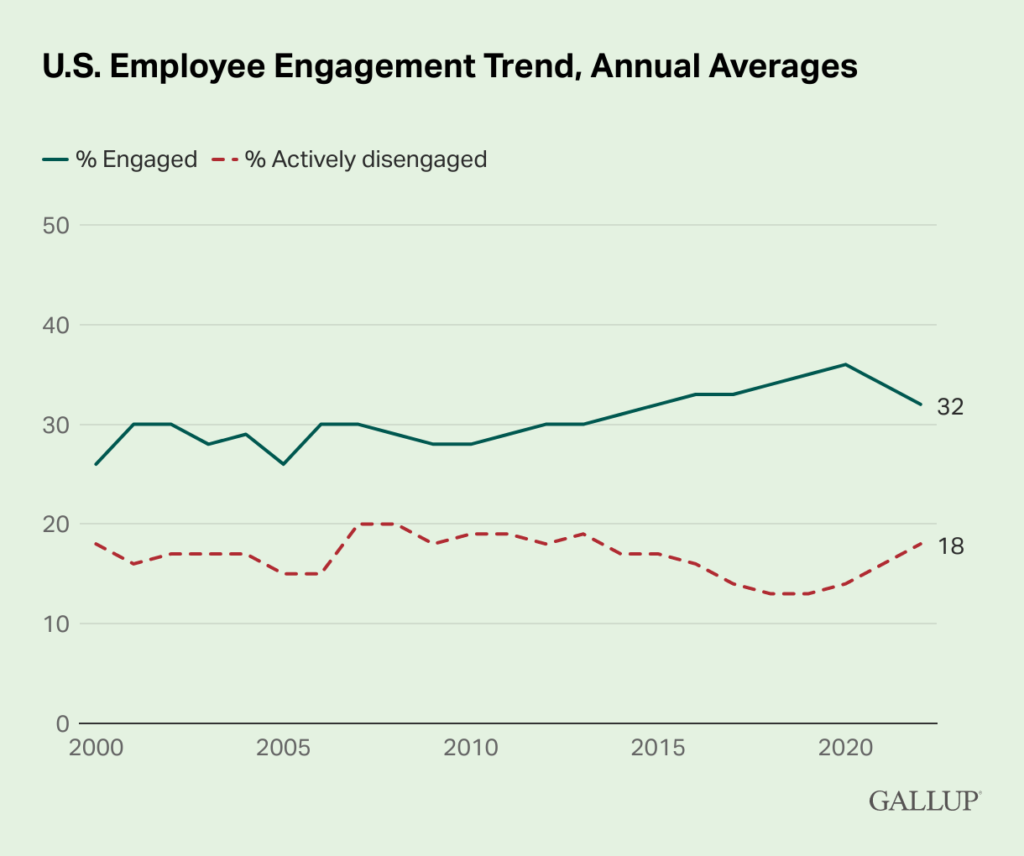
TikTok first debuted the terms quiet quitters and quiet quitting in 2022. Quiet quitting is where you’re not outright quitting your job but quitting the idea of going above and beyond. There are many other ways to define it, but I think Quiet Quitting is; employee disengagement.
It is, quite simply, an extension of an ongoing problem that companies have dealt with for years. The pandemic just increased the speed at which this spiraled and reached a wider audience. So much so that it is now one of the hottest trending topics amongst the workforce and has gained widespread news coverage.
The pandemic caused us to experience a dramatic shift in our work-life balance. Our home life became our work life; we started working longer hours with less job security, and we had to adapt to new work expectations and the new normal. We also faced record-breaking inflation, global unrest, and soaring interest rates.
Is it just noise, or is quiet quitting real?
According to this survey from Gallup, Quiet Quitters now make up 50% of the U.S workforce. The rest of the workforce can be split into engaged (32%) and active disengaged (18%). The active disengaged tend to have most of their workplace needs unmet and share their dissatisfaction widely – they are the most vocal on social media.

Worryingly, however, the next generation is the most affected group. They feel less cared about, are actively disengaged, and are likely already looking for another job.
6 Top ways to Motivate Quiet Quitters
Effective leaders can take the following actions to re-prioritize engagement and stem the rise of quiet quitting:
1. Turn managers into coaches.
With the power of AI, you can give managers focused and closed feedback loops. AI, combined with emotional intelligence and creativity, can help a manager to become effective coaches and positively impact employee success.
2. Continuously Listen to Your Employees.
When employees enjoy their work, they’re more engaged and productive. Make time to sit with employees and find out what tasks and projects they want to be involved with. There will always be things people don’t want to do, but companies must ensure they give their employees tasks and projects they can engage with and be happy to work on. This will improve their motivation.
3. Give recognition and reward often.
According to Workstars, 66% of employees are likely to leave their jobs because they don’t feel appreciated. Once again, this figure is higher among millennials, with 80% looking for a new job if they don’t feel appreciated. You don’t always have to throw a pizza or beer party. Sometimes it can be just as simple as telling them well done for doing a good job.
4. Create a culture where employees can grow and thrive.
When employees’ efforts are rewarded, and they are provided the opportunity to participate in continuous learning with a clear vision of career progression, they will feel appreciated and motivated.
5. Use gamification to drive engagement.
People measure every aspect of their lives, from steps and sleep to calories burned. Why not replicate the same experience and measurement for success at work? Create a gamified experience to track their success, level of engagement, and performance. Employees desire immediate feedback, recognition, and rewards. Companies can provide next-level engagement and connectedness to everyday work through friendly competition.
6. Most importantly, show that you care.
Companies succeed when their employees are engaged and happy. They cannot ignore quitting. You need to be transparent and invest in your employees. Listen to them, and you hear them through your actions.
About BeeLiked
A good business is only as good as its employees. The BeeLiked gamification platform allows companies to motivate and reward their employees with personalized promotions with long-lasting benefits.



















